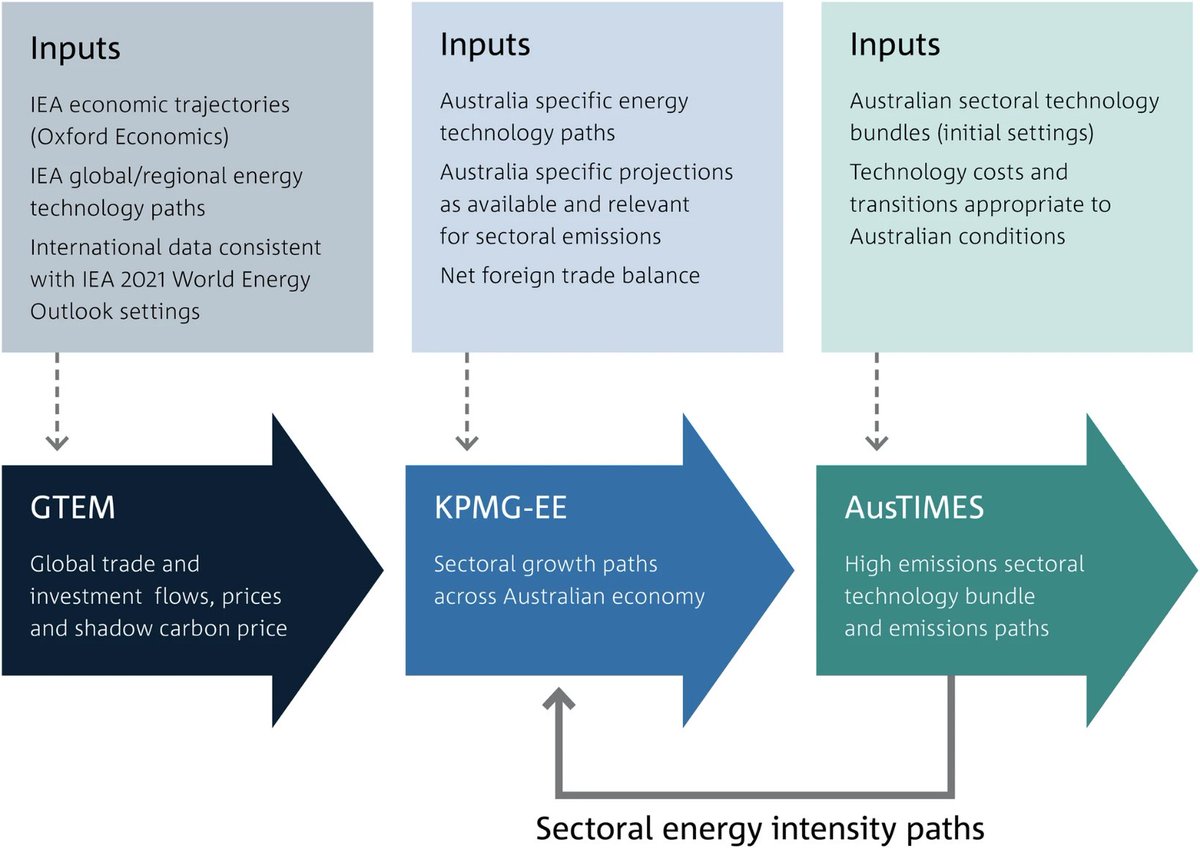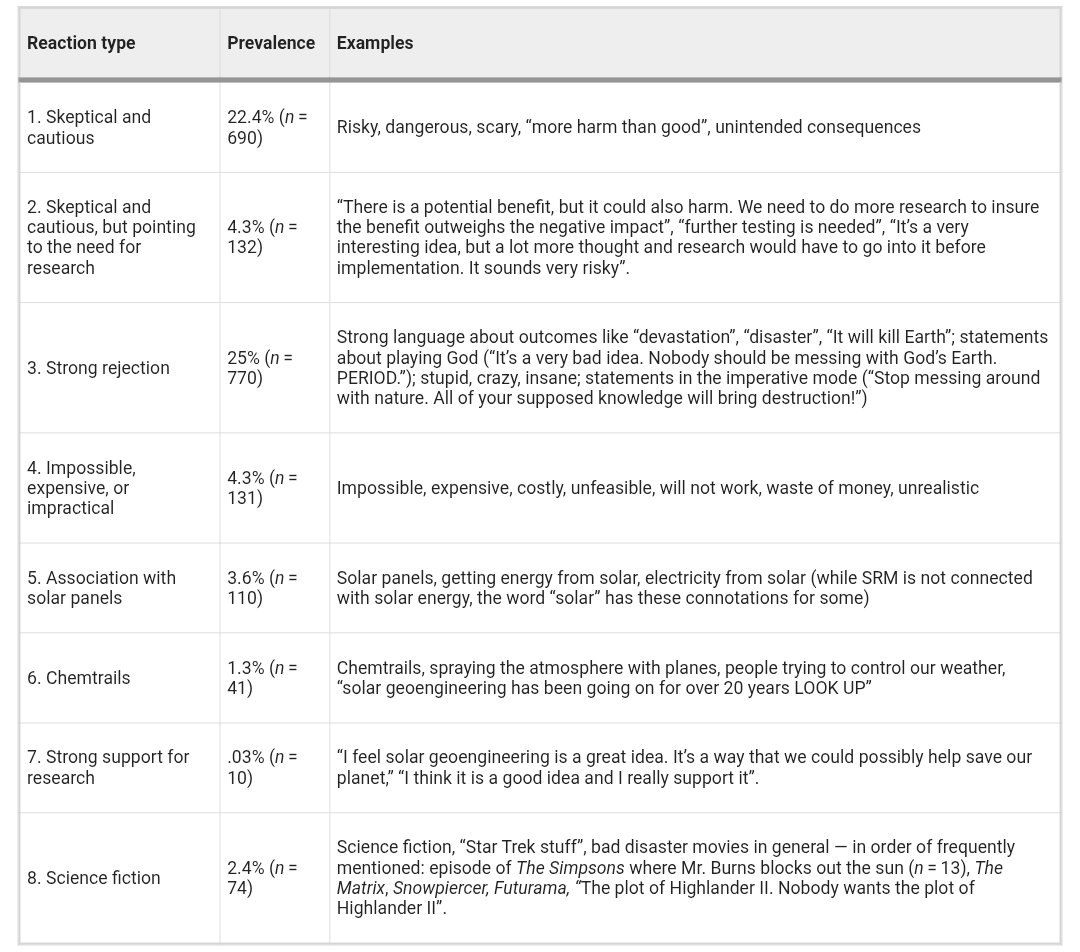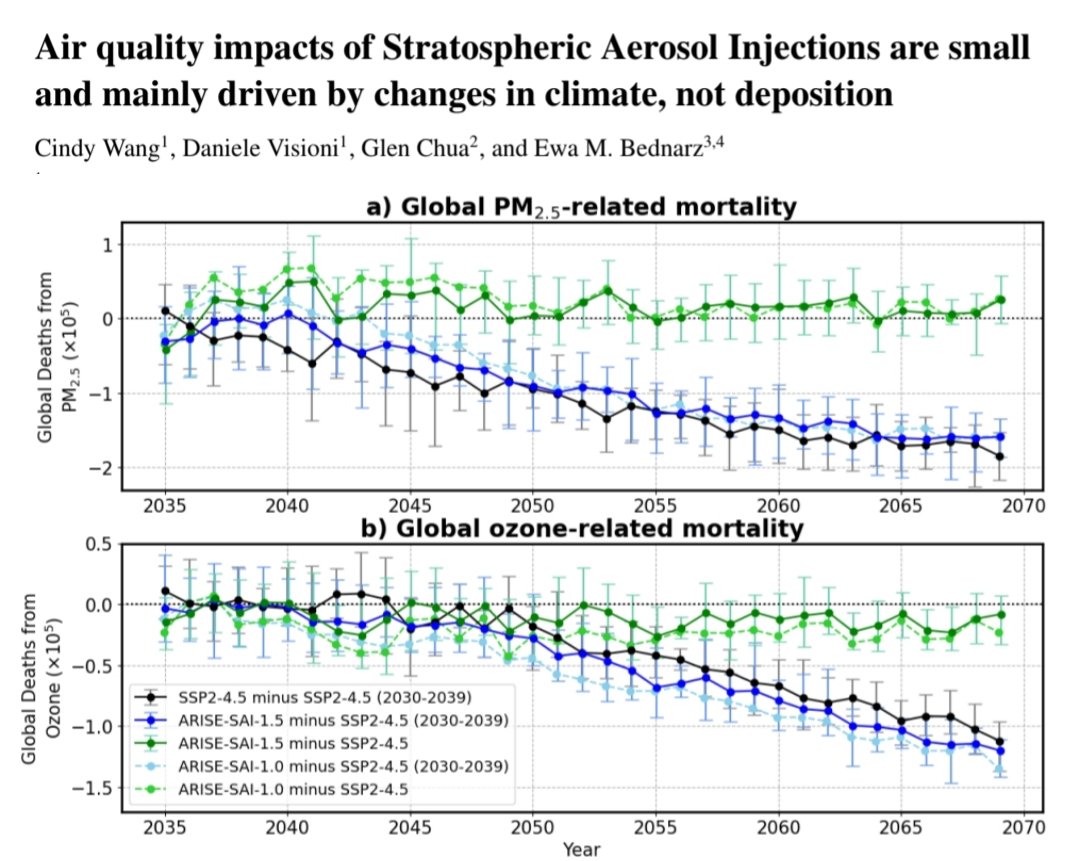🚨A new CSIRO-led study finds Australia can achieve net-zero emissions cost-effectively by 2050 if it acts early.
Rapid decarbonisation of electricity, scaled #CarbonRemoval, and strategic land offsets are central to success.
Details🧵1/9
Rapid decarbonisation of electricity, scaled #CarbonRemoval, and strategic land offsets are central to success.
Details🧵1/9

2/ The research adapts the IEA’s global net-zero scenarios to Australia’s economy using an integrated economic–energy model.
It compares a Rapid Decarbonisation pathway, consistent with limiting warming to 1.5 °C, with a Stated Policies path leading to ~2.6 °C by 2100.
It compares a Rapid Decarbonisation pathway, consistent with limiting warming to 1.5 °C, with a Stated Policies path leading to ~2.6 °C by 2100.

3/ Electricity emerges as cornerstone. In rapid pathway, coal is 85% retired by 2030 & fully phased out by 2035.
Renewables supply ~90% of generation by 2030, cutting emissions intensity to ~15% of 2020 levels & enabling deeper decarbonisation across various sectors.
Renewables supply ~90% of generation by 2030, cutting emissions intensity to ~15% of 2020 levels & enabling deeper decarbonisation across various sectors.

4/ From the 2030s onward, CDR is indispensable.
By mid-century, Australia could remove ~200 Mt CO₂ each year:
-two-thirds from engineered options such as DACCS (~66 Mt) & BECCS (~18 Mt),
-the remainder (~128 Mt) from land use, land-use change, and forestry (LULUCF).
By mid-century, Australia could remove ~200 Mt CO₂ each year:
-two-thirds from engineered options such as DACCS (~66 Mt) & BECCS (~18 Mt),
-the remainder (~128 Mt) from land use, land-use change, and forestry (LULUCF).

5/ Land-based removals are initially more cost-effective, leveraging Australia’s extensive marginal lands for sequestration.
Yet permanence is at risk from climate-driven wildfires, highlighting the importance of a diversified removal portfolio and resilient land management.
Yet permanence is at risk from climate-driven wildfires, highlighting the importance of a diversified removal portfolio and resilient land management.
6/ Beyond its borders, Australia could become a major exporter of zero-C energy, particularly green H2, drawing on vast renewable resources & industrial expertise.
This could help decarbonise global supply chains, though cost, infrastructure & market readiness remain challenges
This could help decarbonise global supply chains, though cost, infrastructure & market readiness remain challenges

7/ Delay carries steep costs: accelerated, disruptive emissions cuts later; stranded fossil-fuel assets; and higher energy price volatility.
Early, planned action lowers these risks and stabilises long-term investment signals.
Early, planned action lowers these risks and stabilises long-term investment signals.
8/ The transition demands significant capital:
- ~AU$713 billion for electricity infrastructure alone by 2050
- plus parallel investments in H2, CCS, storage & transmission.
Unlocking private finance, alongside public support, is essential for scaling technologies on time.
- ~AU$713 billion for electricity infrastructure alone by 2050
- plus parallel investments in H2, CCS, storage & transmission.
Unlocking private finance, alongside public support, is essential for scaling technologies on time.

📝For more details, read the study entitled "Early transition to near-zero emissions electricity and carbon dioxide removal is essential to achieve net-zero emissions at a low cost in Australia " here:
🧵9/9 #CDR #ClimateSolutionsnature.com/articles/s4324…
🧵9/9 #CDR #ClimateSolutionsnature.com/articles/s4324…
"Unroll" @threadreaderapp
• • •
Missing some Tweet in this thread? You can try to
force a refresh












